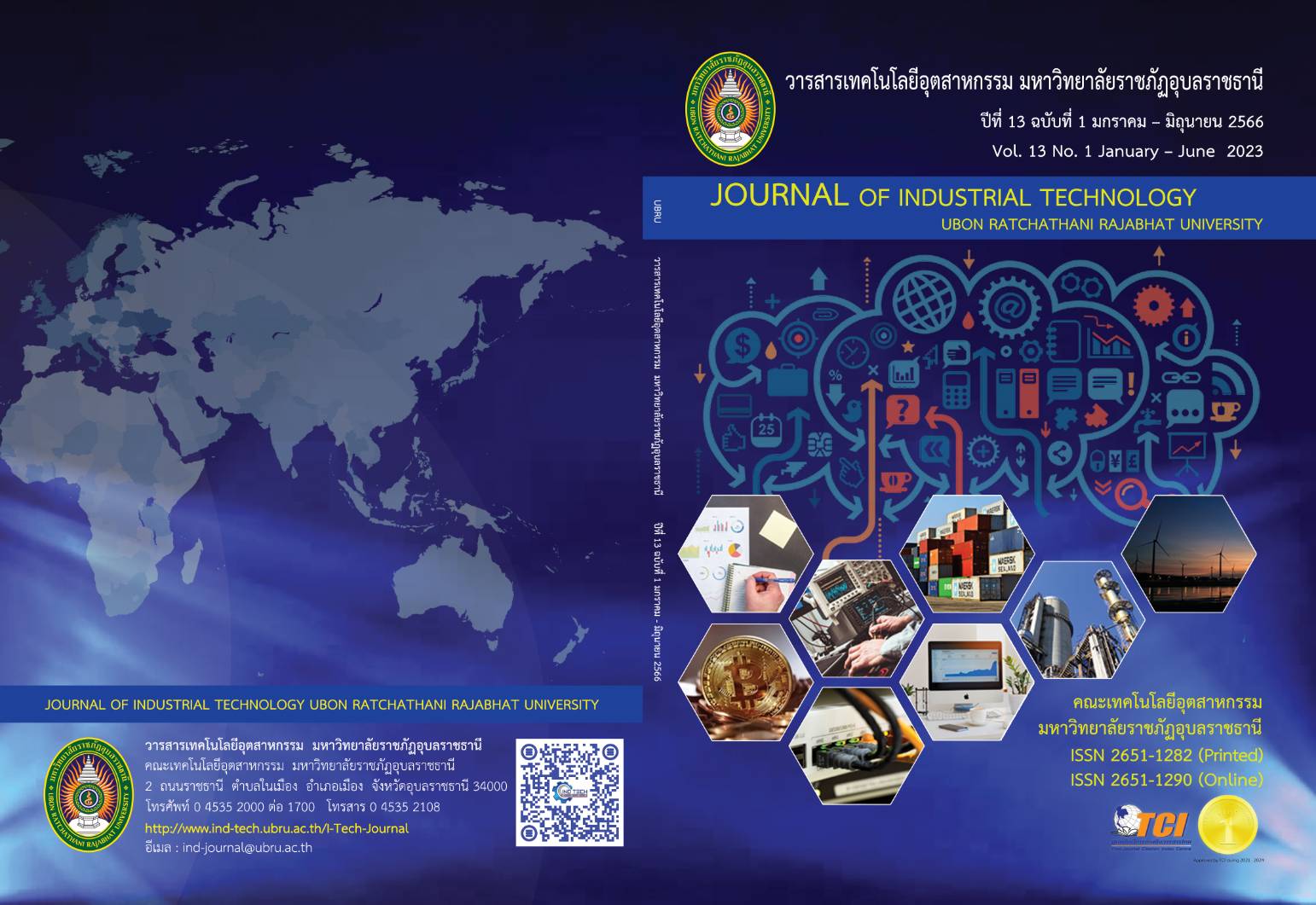การเรียนรู้แบบกลุ่มของการเรียนรู้เชิงลึกโดยใช้วิธีการกำหนดน้ำหนักแบบอุดมคติสำหรับการตรวจสอบข่าวปลอมในสื่อออนไลน์
Main Article Content
บทคัดย่อ
ข่าวปลอมเป็นปัญหาหนึ่งที่มีความสำคัญต่อสังคมและธุรกิจ การตรวจจับข่าวปลอมแบบอัตโนมัติที่ถูกต้องแม่นยำสามารถช่วยลดการแพร่กระจายของข่าวปลอม ลดความวุ่นวายทางสังคมและลดความเสียหายทางธุรกิจได้ทันเวลา งานวิจัยนี้นำเสนอวิธีการเรียนรู้แบบกลุ่มของการเรียนรู้เชิงลึกโดยใช้วิธีการกำหนดน้ำหนักแบบอุดมคติสำหรับการตรวจสอบข่าวปลอมจากชุดข้อมูลข่าวปลอมของไอเอสโอที ซึ่งเป็นชุดข้อมูลที่รวบรวมจากเว็บไซต์ข่าวภาษาอังกฤษ จำนวนทั้งหมด 44,898 บทความ แบ่งเป็น 2 กลุ่มข่าว ได้แก่ ข่าวจริง จำนวน 21,417 บทความ และข่าวปลอม จำนวน 23,481 บทความ โดยขั้นตอนแรกกระบวนการเตรียมข้อมูลด้วยวิธีประมวลผลคำถูกนำมาใช้ในการแปลงข้อมูลจากข้อมูลที่ไม่มีโครงสร้างให้อยู่ในรูปแบบของข้อมูลที่มีโครงสร้าง ขั้นตอนที่สองทำการทดสอบโมเดลการเรียนรู้โดยใช้โครงข่ายประสาทแบบคอนโวลูชัน (ซีเอ็นเอ็น) ร่วมกับวิธีการหาค่าที่เหมาะที่สุด 3 วิธี ได้แก่ ซีเอ็นเอ็น-เอสจีดี, ซีเอ็นเอ็น-อาร์เอ็มเอสพรอพ และซีเอ็นเอ็น-อดัม จากนั้นคำนวณค่าน้ำหนักของแต่ละโมเดล
โดยใช้วิธีการกำหนดน้ำหนักแบบอุดมคติ หลังจากนั้นนำค่าน้ำหนักที่ได้จากการคำนวณมาสร้างการเรียนรู้แบบกลุ่ม สุดท้ายโมเดลที่นำเสนอถูกทดสอบประสิทธิภาพ ผลการศึกษาแสดงให้เห็นว่าวิธีการที่นำเสนอมีประสิทธิภาพความถูกต้องสูงกว่าโมเดลต้นแบบ โดยค่าความถูกต้องของโมเดลที่นำเสนอ ซีเอ็นเอ็น-เอสจีดี, ซีเอ็นเอ็น-อาร์เอ็มเอสพรอพและซีเอ็นเอ็น-อดัม เท่ากับ 98.32%, 75.36%, 98.20% และ 98.04% ตามลำดับ สำหรับงานในอนาคต วิธีที่เสนอควรได้รับการทดสอบกับกรณีต่าง ๆ มากขึ้น เพื่อเพิ่มความน่าเชื่อถือของวิธีการที่นำเสนอ
Article Details

อนุญาตภายใต้เงื่อนไข Creative Commons Attribution-NonCommercial-NoDerivatives 4.0 International License.
บทความที่ได้รับการตีพิมพ์ในวารสารฯ ท้ังในรูปแบบของรูปเล่มและอิเล็กทรอนิกส์เป็นลิขสิทธิ์ของวารสารฯ
เอกสารอ้างอิง
Umer M, Imtiaz Z, Ullah S, Mehmood A, Choi GS, On B-W. Fake news stance detection using deep learning architecture (CNN-LSTM). IEEE Access. 2020; 8: 156695–706.
Ajao O, Bhowmik D, Zargari S. Fake News Identification on Twitter with Hybrid CNN and RNN Models. 9th International Conference on Social Media and Society. 2018. Copenhagen.
ANTI-FAKE NEWS CENTER THAILAND. ANTI-FAKE NEWS CENTER THAILAND [Internet]. 2020 [cited 2021 Jul 15]. Available from: https://www.antifakenewscenter.com.
Nasir JA, Khan OS, Varlamis I. Fake news detection: A hybrid CNN-RNN based deep learning approach. International Journal of Information Management Data Insights. 2021; 1(1): 100007.
Awan MJ. Fake News Classification Bimodal using Convolutional Neural Network and Long Short-Term Memory. Artic Int J Emerg Technol Learn [Internet]. 2020 [cited 2021 July 21] Available from: https://www.researchgate.net/publication/347886404.
Dos Santos C, Zadrozny B. Learning character-level representations for part-of-speech tagging. International Conference on Machine Learning. 2014. p. 1818–26. PMLR.
Abdi A, Shamsuddin SM, Hasan S, Piran J. Deep learning-based sentiment classification of evaluative text based on Multi-feature fusion. Information Processing Management. 2019; 56(4): 1245–59.
Kumar A, Jaiswal A. Deep learning based sentiment classification on user-generated big data. Recent Advances in Computer Science and Communications (Formerly: Recent Patents Computer Science). 2020; 13(5): 1047–56.
Onan A. Deep learning based sentiment analysis on product reviews on Twitter. International Conference on Big Data Innovations and Applications. 2019. p. 80–91. Springer.
Kumar S, Asthana R, Upadhyay S, Upreti N, Akbar M. Fake news detection using deep learning models: A novel approach. Trans Emerg Telecommun Technol. 2020; 31(2): e3767.
Ge L, Hang R, Liu Y, Liu Q. Comparing the performance of neural network and deep convolutional neural network in estimating soil moisture from satellite observations. Remote Sensing. 2018; 10(9): 1327.
Ruder S. An overview of gradient descent optimization algorithms. arXiv Preprint arXiv:1609.
2016.
Kingma DP, Ba J. Adam: A method for stochastic optimization. arXiv Preprint arXiv:1412.6980. 2014.
Sarawoot Boonkidram NS. Physical Quality Investigation of Germinated Brown Rice by using Image Processing. Journal of Information Science and Technology. 2020; 10(2): 101–9.
Cai J, Li J, Li W, Wang J. Deeplearning model used in text classification. 15th International Computer Conference on Wavelet Active Media Technology and Information Processing (ICCWAMTIP). 2018 p. 123-6. IEEE.
Ahmed H, Traore I, Saad S. Detecting opinion spams and fake news using text classification. Security and Privacy. 2018; 1(1): e9.
Ahmed H, Traore I, Saad S. Detection of online fake news using n-gram analysis and machine learning techniques. International conference on intelligent, secure, and dependable systems in distributed and cloud environments. 2017. p. 127-38. Springer.


